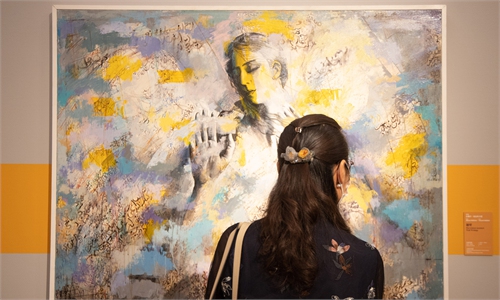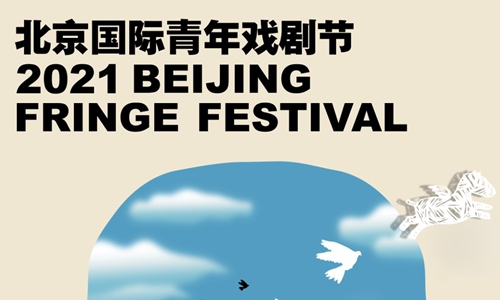ARTS / ART
Lao Pu, a thinker of Chinese art
Introduction to the artist
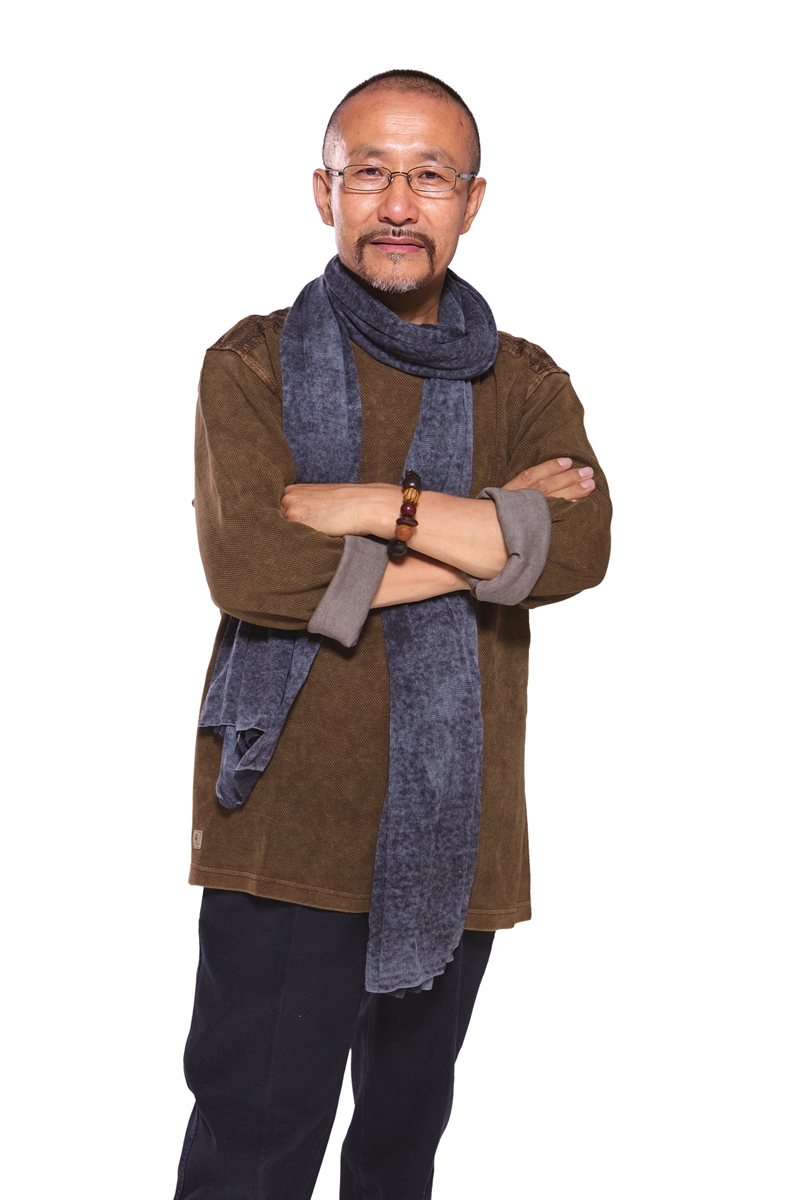
In 2004, he served as the director of the Academic Affairs Office of the Rongbaozhai Painting Academy and the director of the Chinese Painting Creation Research Center. For more than 10 years, he has been engaged in artistic creation, academic research and teaching external art exchange activities of the Rongbaozhai Painting Academy.
He has found artistic inspiration and creative themes from life, and finally established ink paintings of vegetables and fruits as his main creative objects.
He gradually formed a unique language of personality and original artistic expression, and became a new force in Chinese flower and bird paintings.

The Song Dynasty Xuanhe Painting Book divided paintings into 10 categories.
In addition to landscapes, figures, flowers and birds, there is also a category of vegetables and fruits.
This category is a painting study that has great importance in Chinese history. The sketching of fruits and vegetables is also the most difficult, especially the ones in a garden.
Lao Pu is an artist who faces this challenge head on, he has dedicated his life to painting fruits and vegetables.
The evolution of fruit and vegetable painting
There is no shortage of people in the vegetable and fruit line, but there are fewer painters, and even fewer good ones. The Xuanhe Painting Book records that there are only six fruit and vegetable painters.
There are still not many who specialize in painting fruits and vegetables, but some people have inherited it, such as Qi Baishi.
His paintings of cabbage, mushrooms, bamboo shoots, and radishes are the aftertaste of his childhood rural life.

In the 1950s and 1960s, painting fruits and vegetables became a symbol of harvest and intellectuals' conception of getting close to farmers' ideological transformation. It was a typical subject of the painters of the Beijing Fine Art Academy.
The collective creation of "The Great Leap Forward in Agriculture" is an unprecedented collection of dozens of varieties of wheat, rice, vegetables and fruits.

In the new era, everyone's mind was emancipated, and the painting of vegetables and fruits overcame the barriers limited to agricultural harvests and gained liberation. When we began to express our culture, we were expressing a kind of context of spirit and temperament. In this environment, Lao Pu came into being.
Simple people and paintings
Simplicity is one of the main themes in Lao Pu's work. He is more drawn to painting vegetables and fruits that he has cultivated and taken care of since he was a child.
The countryside represents the simplicity and tranquility that is heavily featured in his works. It arouses a unique feeling and gives a special meaning to life. It's a philosophy that Lao Pu, one would say, worships.
The philosophy, which is ubiquitous in Lao Pu's paintings, communicates nobility, closeness to nature, peace of mind and a kind of resilience.
Art style
Lao Pu's philosophy of simplicity is central to his works.
Giving them purity and elegance rare in these kinds of works. Qi Baishi's paintings of scallions and bamboo shoots are also exemplars of this theme. He combined the pen and ink of literati painting with folk sentiment, and used literati ink to water the garden of taro and cabbage.
If Qi Baishi has made literati paintings folk, Lao Pu has made folk materials literati. It's not that he doesn't have the beauty of folk, but he has more of a kind of mind and sentiment of the literati, and realistic academic pen and ink.
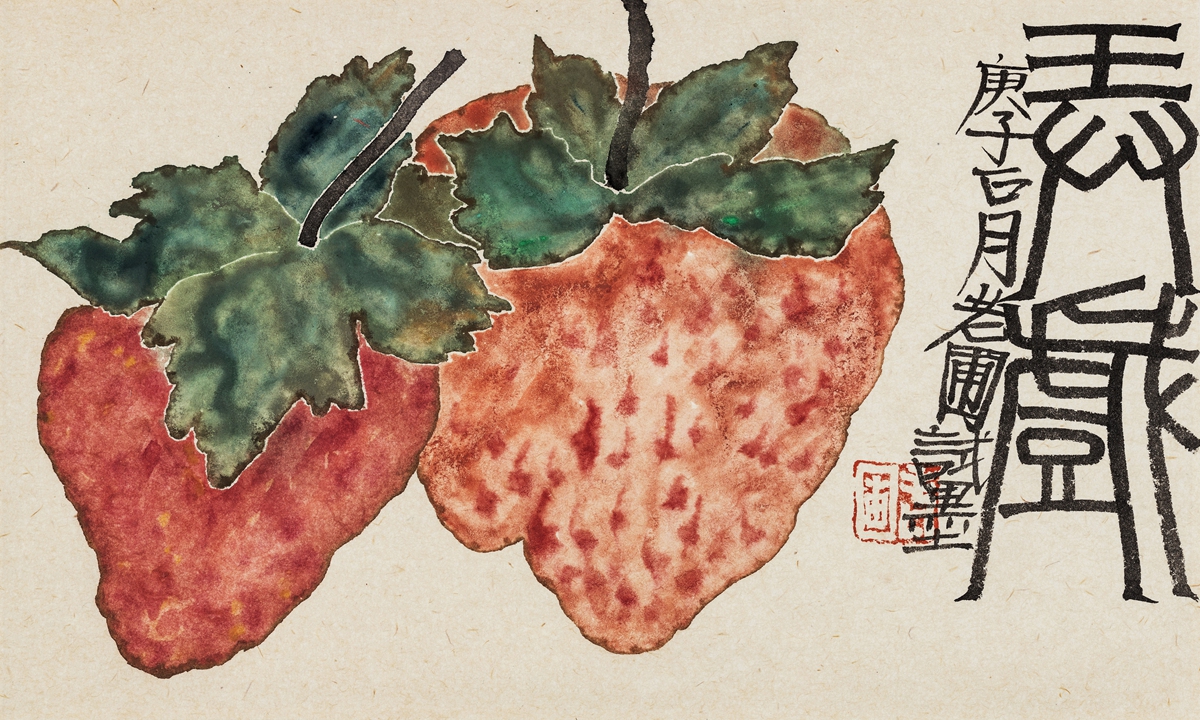
"I use two sentences to describe his art," says Chinese calligrapher Liu Xilin.
"The first sentence is 'realistic in its form, simple in its heart.' In other words, realistic and freehand. He unifies the opposites between realism and freehand brushwork.
"Another sentence is 'coloring its pen, high-quality heart.'
"The lightly colored pen and ink, strokes, some expressive language similar to withered grass, and a high-fashioned temperament are unified."
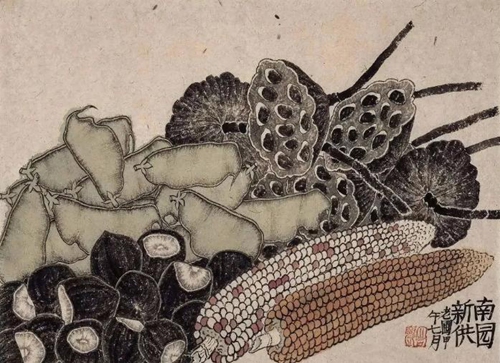
The Song Dynasty version of the characters is thin horizontally and thick vertically, and extremely simple. This kind of character, which is now close to print, is the simplest, but it is also the most recognizable. It is the most elegant font in the ancient Chinese edition of the book.
To draw simple dishes and fruits with a simple heart, and perfect the realization of a simple personality is a lifelong subject for an artist, and it is also the unique feature of Lao Pu's evolution. He is simple and traditional.

Lao Pu
Lao Pu, born in Beijing in 1955, was admitted to the Chinese Painting Department of the Central Academy of Fine Arts in 1978, and he was admitted to the first doctoral program of the Central Academy of Fine Arts in 2002.In 2004, he served as the director of the Academic Affairs Office of the Rongbaozhai Painting Academy and the director of the Chinese Painting Creation Research Center. For more than 10 years, he has been engaged in artistic creation, academic research and teaching external art exchange activities of the Rongbaozhai Painting Academy.
He has found artistic inspiration and creative themes from life, and finally established ink paintings of vegetables and fruits as his main creative objects.
He gradually formed a unique language of personality and original artistic expression, and became a new force in Chinese flower and bird paintings.

Xiao Kou 72 cm × 45 cm, 2021
The history of Chinese painting is a historical evolution process of inheritance and change, and the subject of fruits and vegetables is the same.The Song Dynasty Xuanhe Painting Book divided paintings into 10 categories.
In addition to landscapes, figures, flowers and birds, there is also a category of vegetables and fruits.
This category is a painting study that has great importance in Chinese history. The sketching of fruits and vegetables is also the most difficult, especially the ones in a garden.
Lao Pu is an artist who faces this challenge head on, he has dedicated his life to painting fruits and vegetables.
The evolution of fruit and vegetable painting
There is no shortage of people in the vegetable and fruit line, but there are fewer painters, and even fewer good ones. The Xuanhe Painting Book records that there are only six fruit and vegetable painters.
There are still not many who specialize in painting fruits and vegetables, but some people have inherited it, such as Qi Baishi.
His paintings of cabbage, mushrooms, bamboo shoots, and radishes are the aftertaste of his childhood rural life.

Shan Bei Nong Shu (IV) 30 cm × 350 cm, 2013
Later, Yu Fei'an, Guo Weiyu, and Yu Zhizhen also painted fruits and vegetables.In the 1950s and 1960s, painting fruits and vegetables became a symbol of harvest and intellectuals' conception of getting close to farmers' ideological transformation. It was a typical subject of the painters of the Beijing Fine Art Academy.
The collective creation of "The Great Leap Forward in Agriculture" is an unprecedented collection of dozens of varieties of wheat, rice, vegetables and fruits.

Shan Bei Nong Shu (I) 45 cm × 490 cm 2013
During the Cultural Revolution (1966-76), the nature of this subject changed. It was no longer possible to paint flowers and birds, leaving only a slit for the harvest of vegetables and fruits.In the new era, everyone's mind was emancipated, and the painting of vegetables and fruits overcame the barriers limited to agricultural harvests and gained liberation. When we began to express our culture, we were expressing a kind of context of spirit and temperament. In this environment, Lao Pu came into being.
Simple people and paintings
Simplicity is one of the main themes in Lao Pu's work. He is more drawn to painting vegetables and fruits that he has cultivated and taken care of since he was a child.
The countryside represents the simplicity and tranquility that is heavily featured in his works. It arouses a unique feeling and gives a special meaning to life. It's a philosophy that Lao Pu, one would say, worships.
The philosophy, which is ubiquitous in Lao Pu's paintings, communicates nobility, closeness to nature, peace of mind and a kind of resilience.
Art style
Lao Pu's philosophy of simplicity is central to his works.
Giving them purity and elegance rare in these kinds of works. Qi Baishi's paintings of scallions and bamboo shoots are also exemplars of this theme. He combined the pen and ink of literati painting with folk sentiment, and used literati ink to water the garden of taro and cabbage.
If Qi Baishi has made literati paintings folk, Lao Pu has made folk materials literati. It's not that he doesn't have the beauty of folk, but he has more of a kind of mind and sentiment of the literati, and realistic academic pen and ink.

Nong Xi 35 cm × 45 cm, 2021
Qi Baishi uses ink to paint cabbage and heavy colors for pumpkins and fruits. He uses black and white purely, with less color. When he employs colors, however, he is economical. But when it comes to his pen and ink, his language is plain."I use two sentences to describe his art," says Chinese calligrapher Liu Xilin.
"The first sentence is 'realistic in its form, simple in its heart.' In other words, realistic and freehand. He unifies the opposites between realism and freehand brushwork.
"Another sentence is 'coloring its pen, high-quality heart.'
"The lightly colored pen and ink, strokes, some expressive language similar to withered grass, and a high-fashioned temperament are unified."

Nan Yuan Xin Gong 50 cm × 68 cm, 2014
Everyone can notice that there is an intermediary between his simplicity and elegance, a Song Dynasty version that everyone recognizes.The Song Dynasty version of the characters is thin horizontally and thick vertically, and extremely simple. This kind of character, which is now close to print, is the simplest, but it is also the most recognizable. It is the most elegant font in the ancient Chinese edition of the book.
To draw simple dishes and fruits with a simple heart, and perfect the realization of a simple personality is a lifelong subject for an artist, and it is also the unique feature of Lao Pu's evolution. He is simple and traditional.
